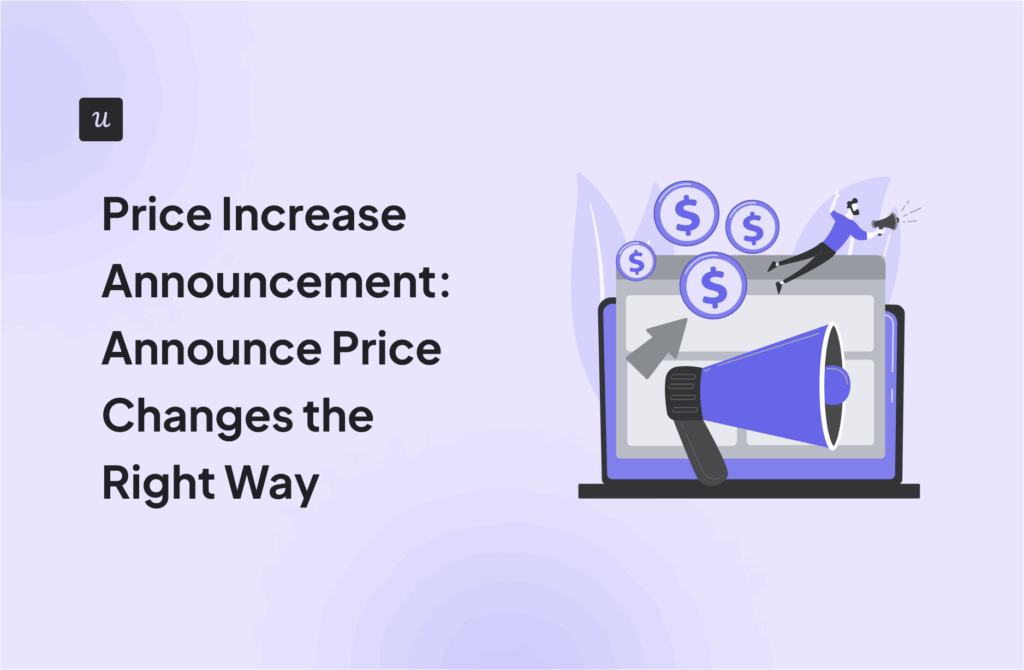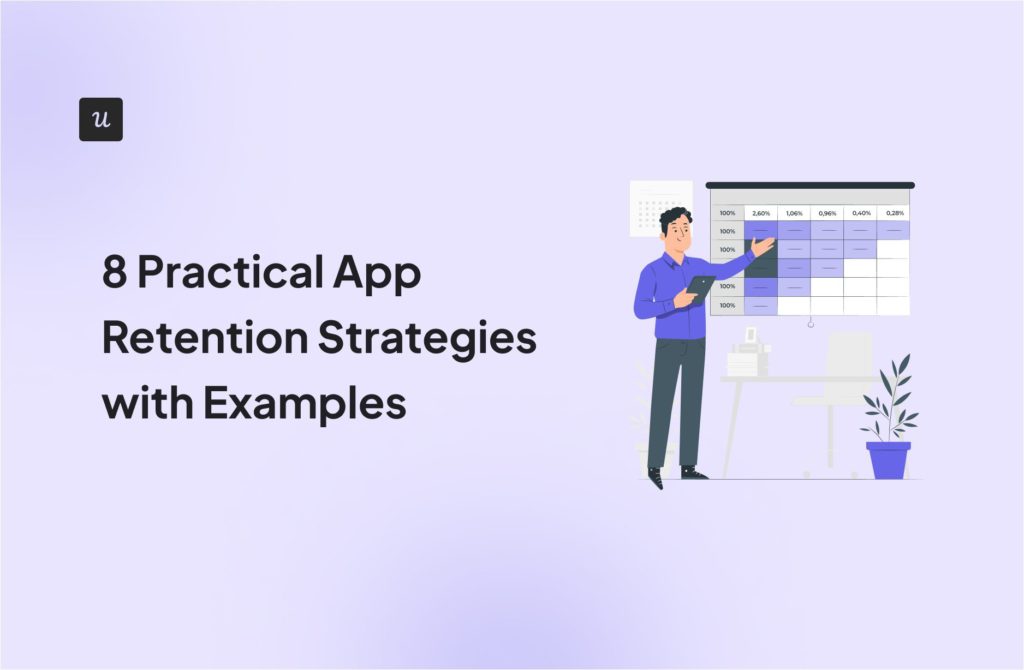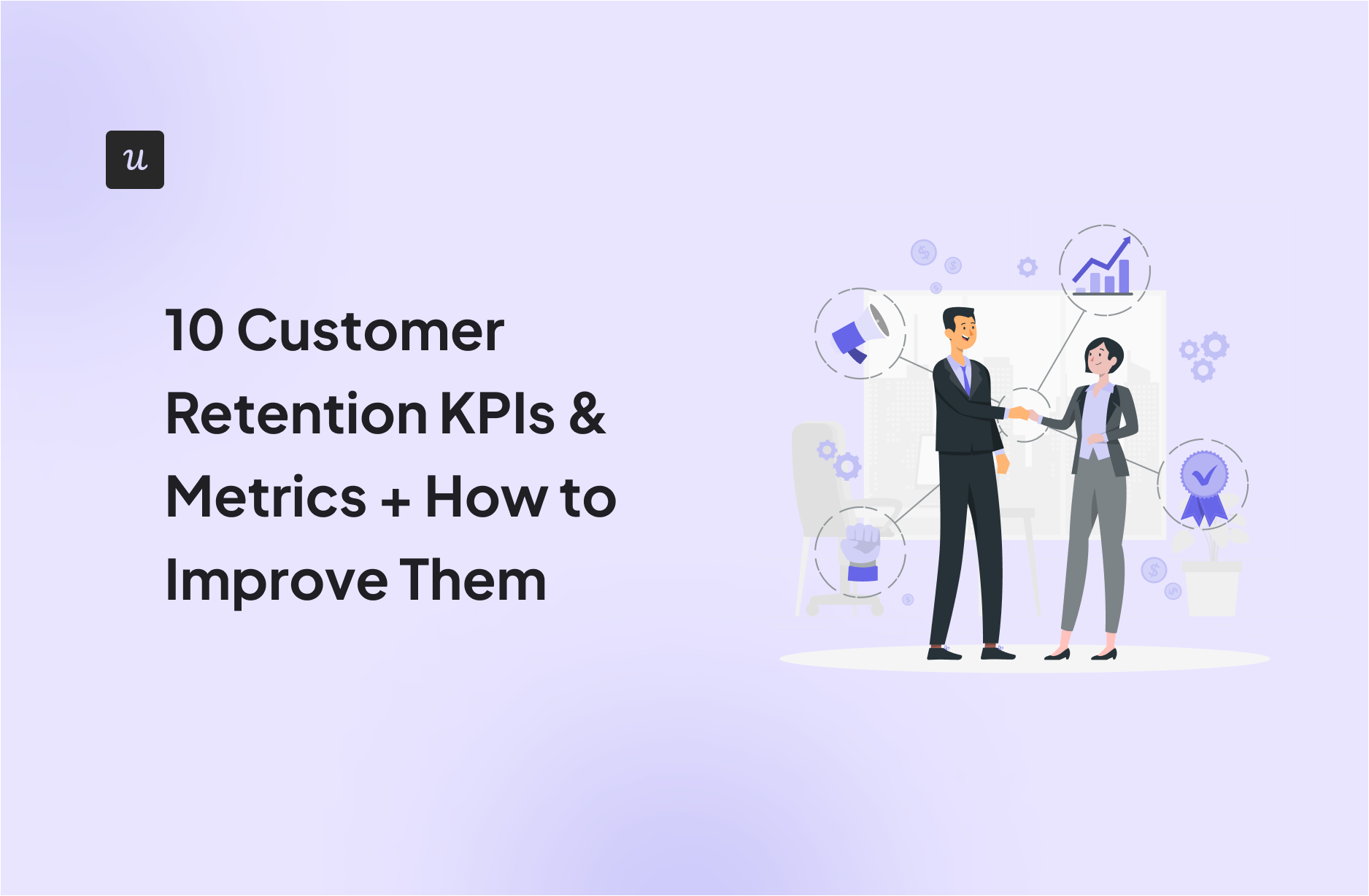
Data shows that acquiring a new customer can be five to seven times more expensive than keeping an existing one. That’s why you should track customer retention KPIs with dashboard reporting tools and prevent churn. This article will go over the following metrics and provide tips for improving them:
- Customer retention rate
- Monthly recurring revenue
- Customer lifetime value
- Product stickiness
- Repeat purchase rate
- Expansion MRR
- Customer satisfaction score
- Net promoter score
- Customer health score
- Revenue churn rate
Get The Insights!
The fastest way to learn about Product Growth, Management & Trends.
Customer retention KPI #1: Customer retention rate
Customer retention rate measures the percentage of users who continued to use your product after their initial purchase. You can use it to determine if your product successfully keeps customers after you acquire them. As a rule of thumb, a high customer retention rate means high profitability.
To calculate the customer retention rate, you need to calculate the number of customers at the end of the period minus the number of new customers acquired during the period, and divide that number by the total number of customers at the start of the period. Then, multiply by 100 to get your retention rate.
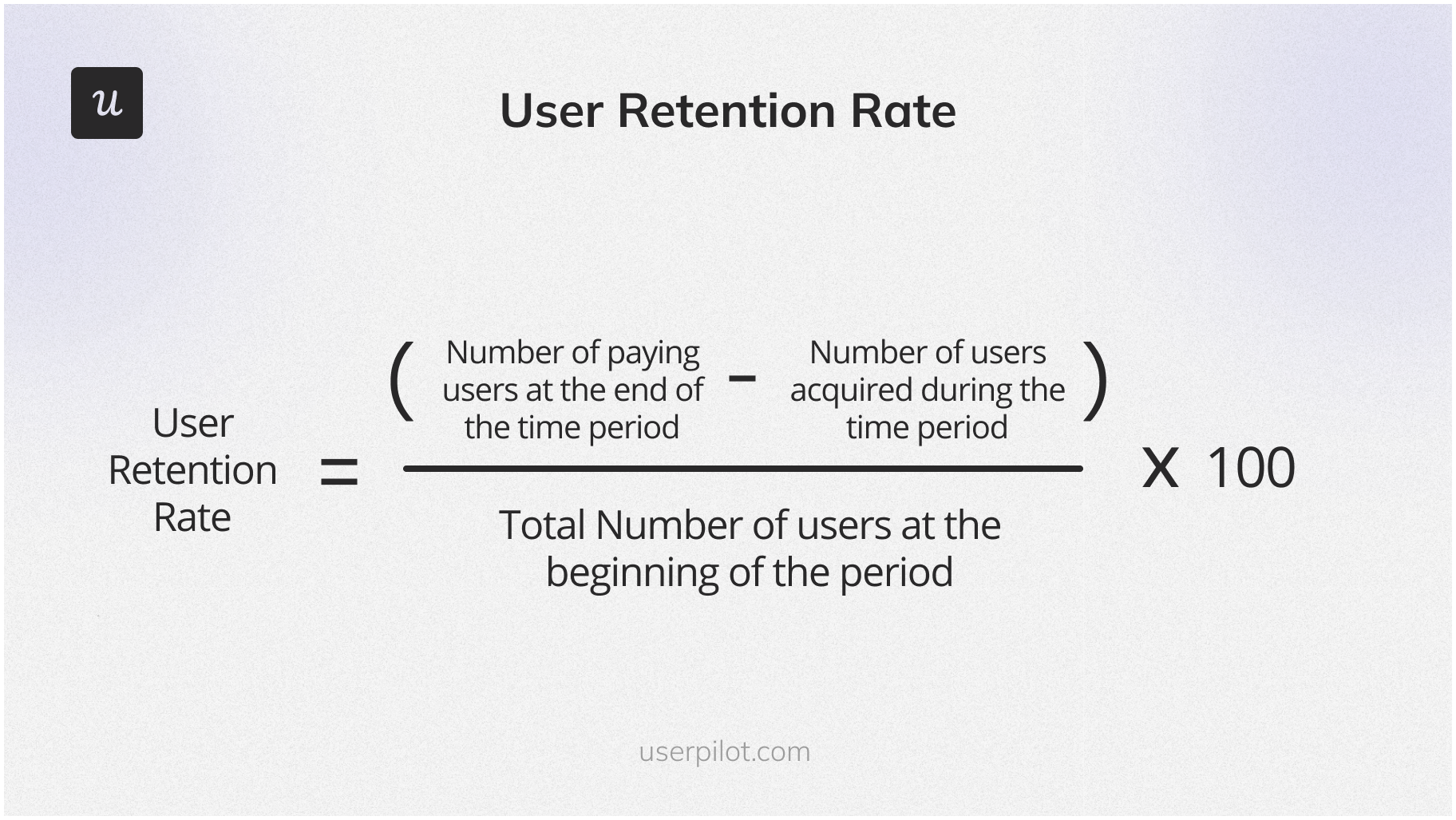
How to improve customer retention rate
Among effective customer retention strategies, the first and most important one is to personalize the onboarding for new customers to shorten the time to value.
Firstly, you need to gather valuable data from new users using welcome surveys. This information will help you to understand the pain points of your users and identify their key ‘jobs to be done‘.
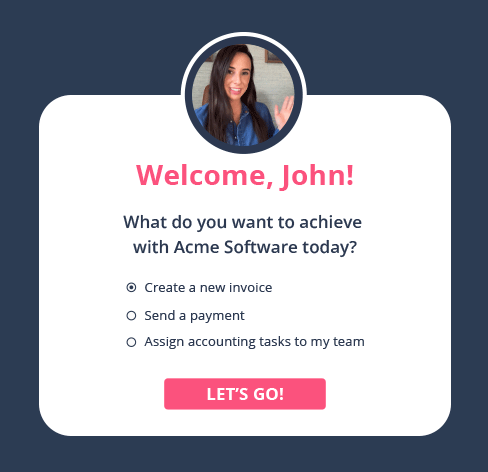
You can use the data you’ve gathered to segment customers and trigger a personalized onboarding experience. This will decrease time to value and increase activation rates, which will help improve customer retention rate.

Customer retention KPI #2: Monthly recurring revenue
MRR refers to the revenue your product generates in a month, typically through subscriptions. This metric is used for forecasting, financial planning, and measuring a product’s growth rate and momentum.
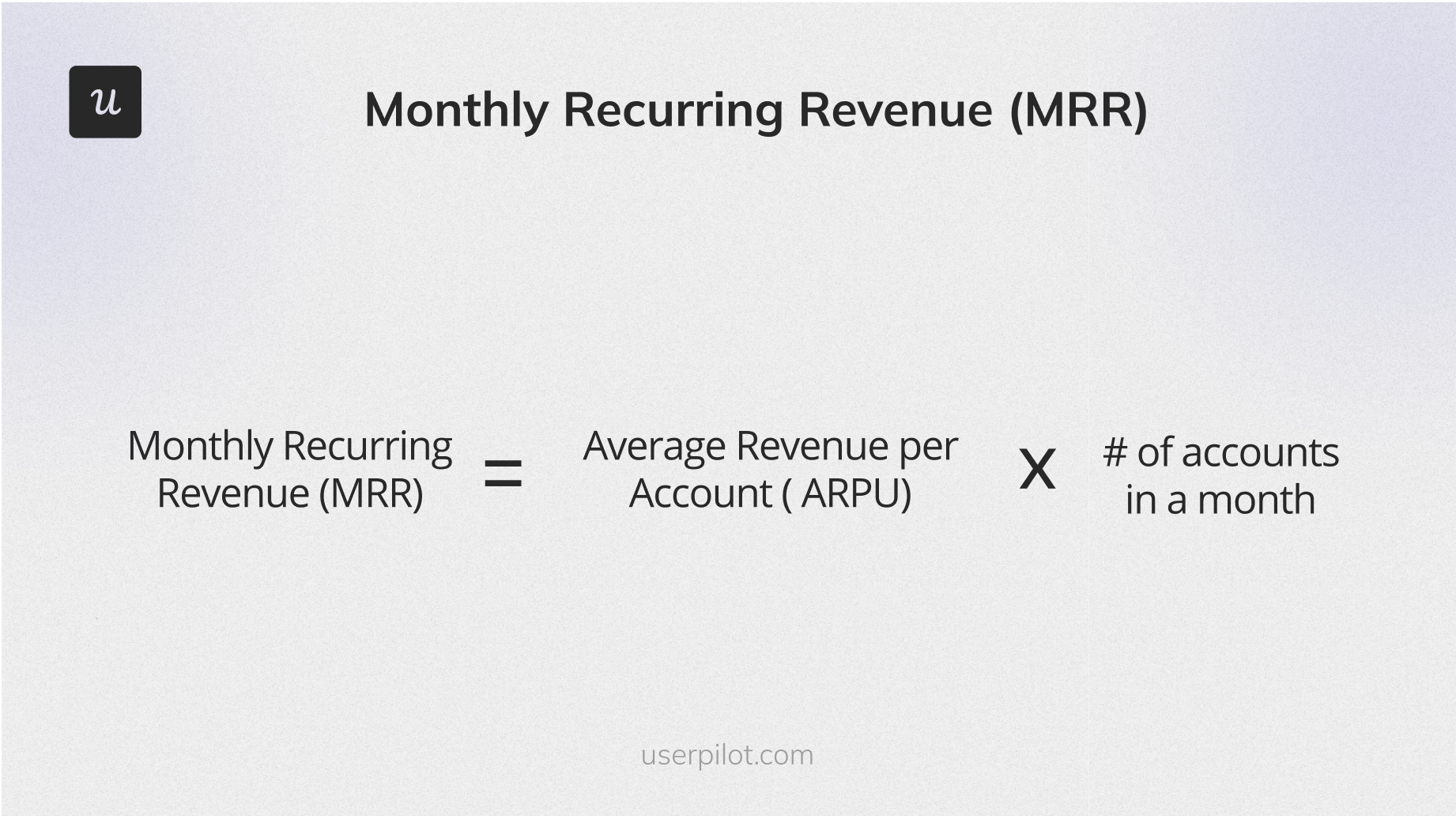
To calculate the MRR, you need to first determine the average revenue per active account (ARPU). Then, multiply this value by the total number of monthly active accounts.
For example, if you have 6,500 active accounts and the average revenue per active account is $25, then your MRR is 6,500 * 25 = $162,500.
How to improve monthly recurring revenue
A higher MRR indicates higher customer retention and lower customer churn. You can improve it through:
- Product tutorials and interactive walkthroughs.
- Loyalty programs and incentives that encourage users to stick around.
- Upgrade prompts via tooltips, modals, and banners.
This is how Mailchimp encourages its users to upgrade their accounts.

Customer retention KPI #3: Customer lifetime value
Customer lifetime value measures the amount of revenue you can expect from a single customer over the lifespan of your business relationship. It indicates customer value and how much you should spend to keep them.
To calculate the CLV, you have to multiply customer value and average customer lifespan.
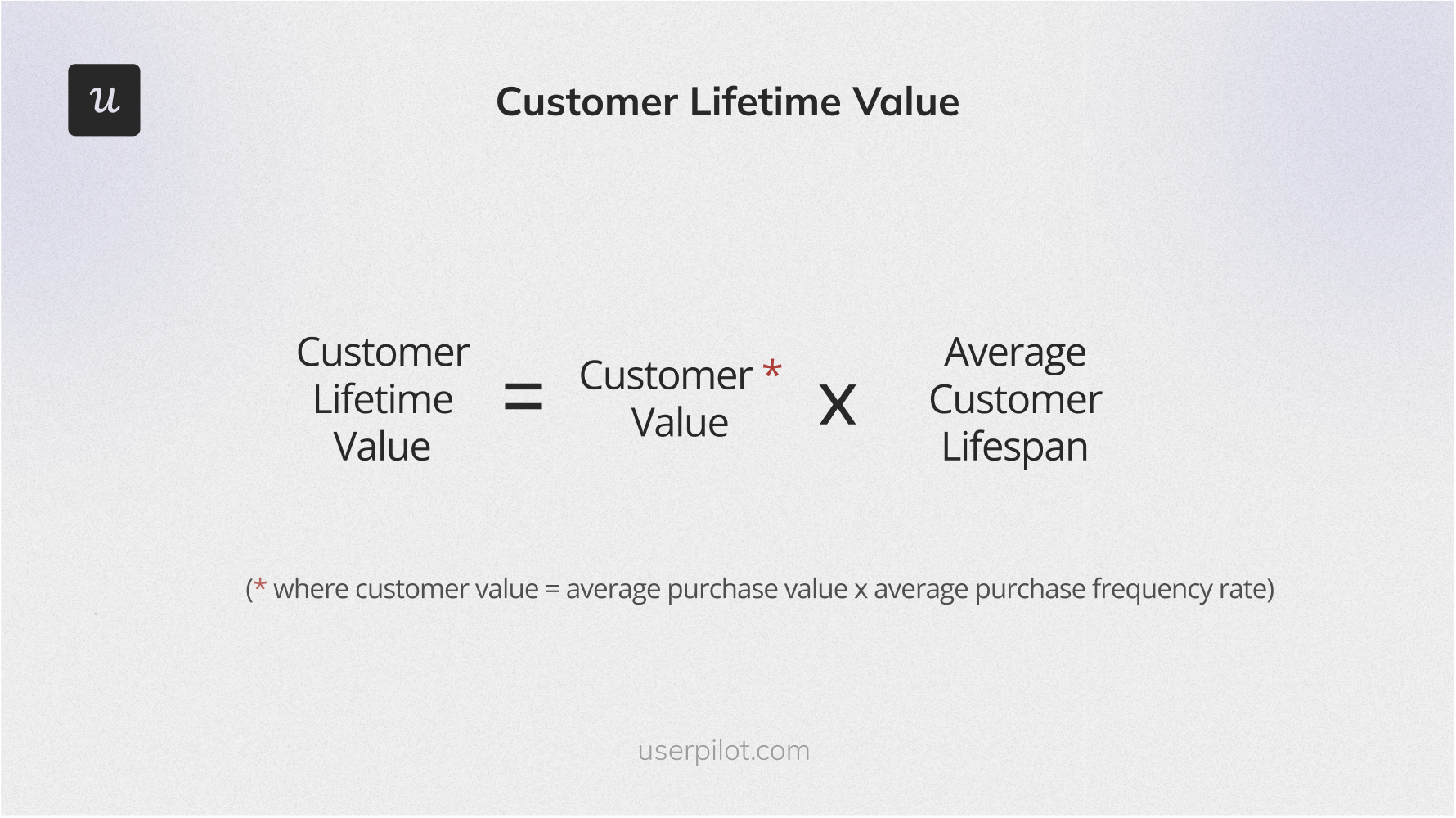
A high lifetime value shows that your existing clients find value in your product in the long run, so they will continue to use it.
Customer retention is crucial for any SaaS company because it lowers the average customer acquisition cost. Also, you can determine who your most profitable customers are.
How to improve customer lifetime value
Although primary onboarding can increase your Day 1 retention, you need secondary onboarding and customer retention strategies to increase the CLV. With secondary onboarding, your clients can become more familiar with new features and relate them to their use cases.
To develop an engaging secondary onboarding process, you may leverage UI components like checklists, modals, and native tooltips. You can create all these code-free with Userpilot.
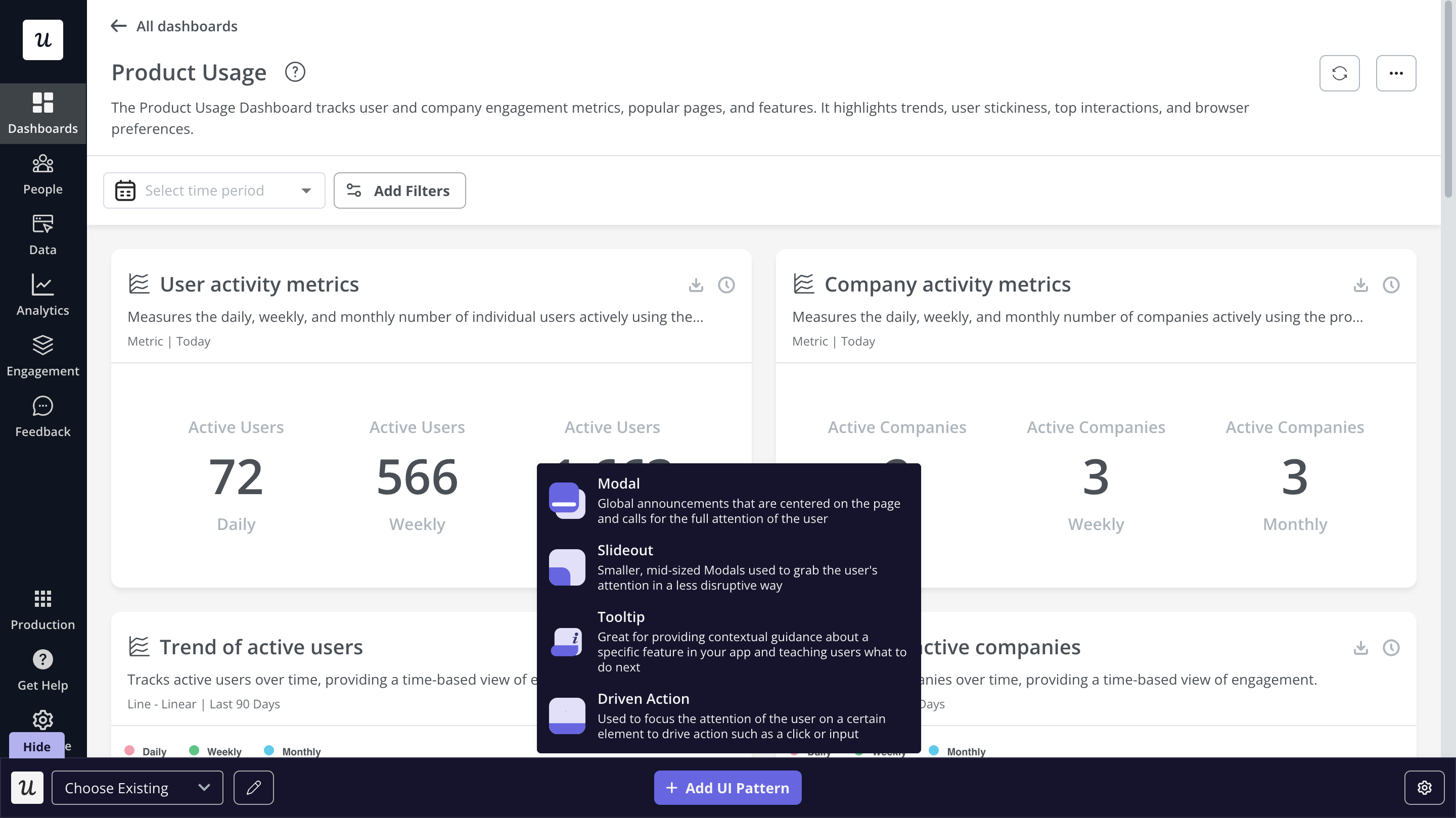
Customer retention KPI #4: Product stickiness
The DAU to MAU ratio is a good measure of product stickiness – the rate at which users return to your product regularly.
This is a key product metric you should measure to understand whether your product creates value or not.
To calculate product stickiness, simply find your daily and monthly active users and then divide them.
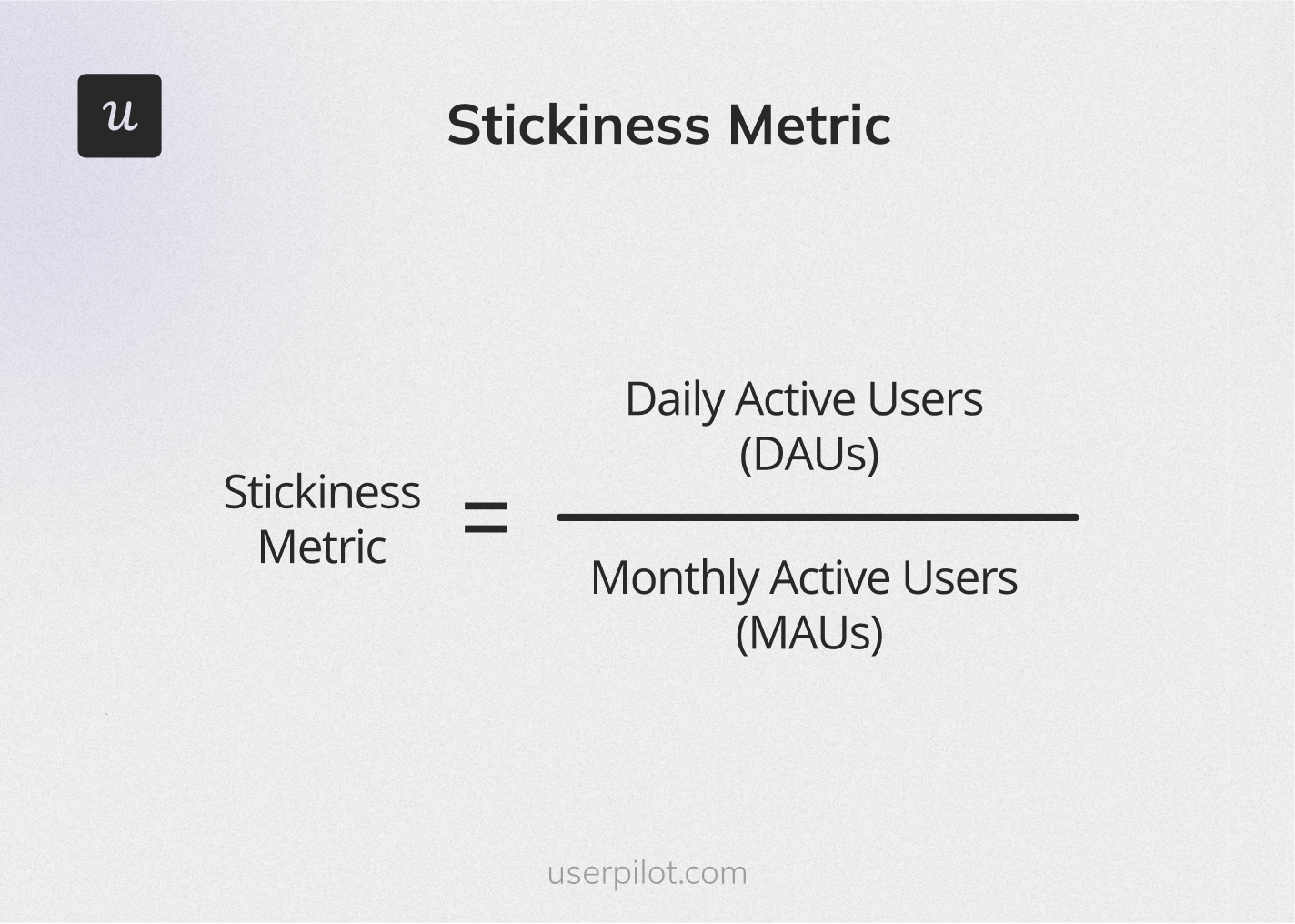
How to improve product stickiness
To improve your user stickiness, focus on:
- Developing engaging user experiences.
- Improving feature adoption rates.
- Creating proactive upsell strategies and introducing existing users to more valuable features.
- Using customer satisfaction surveys to collect feedback, identify friction points, and improve your best features.
Customer retention KPI #5: Repeat purchase rate
This KPI measures the percentage of repeat purchases from customers and demonstrates your customer loyalty in a general sense.
To calculate it, divide the number of returning customers (those who purchased more than once) by the total number of customers in a specified time frame first. Then, multiply the result by 100.
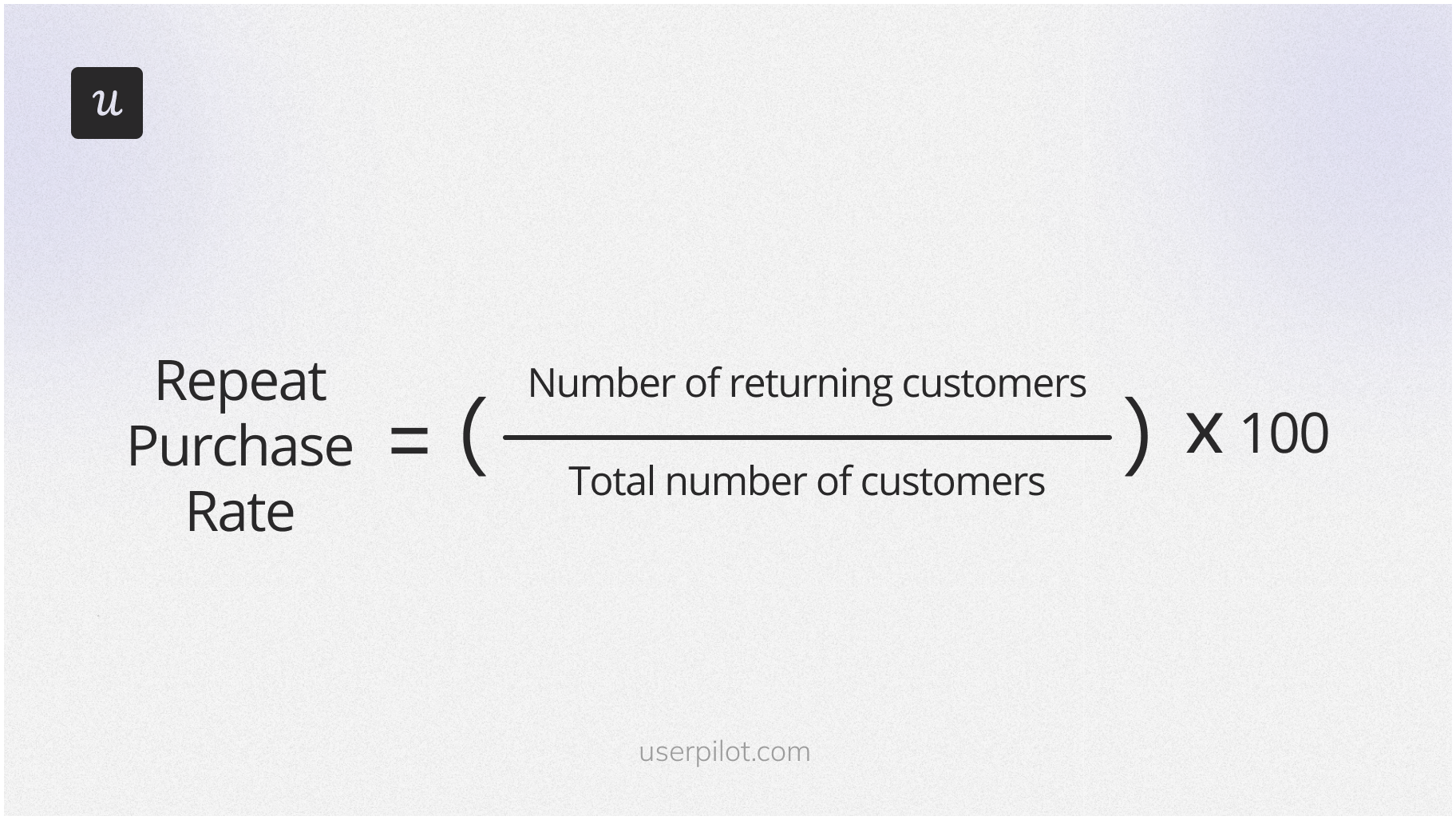
How to improve repeat purchase rate
To encourage repeat purchase frequency, you can offer incentives, discounts, and small rewards to build loyalty and turn users into loyal customers.
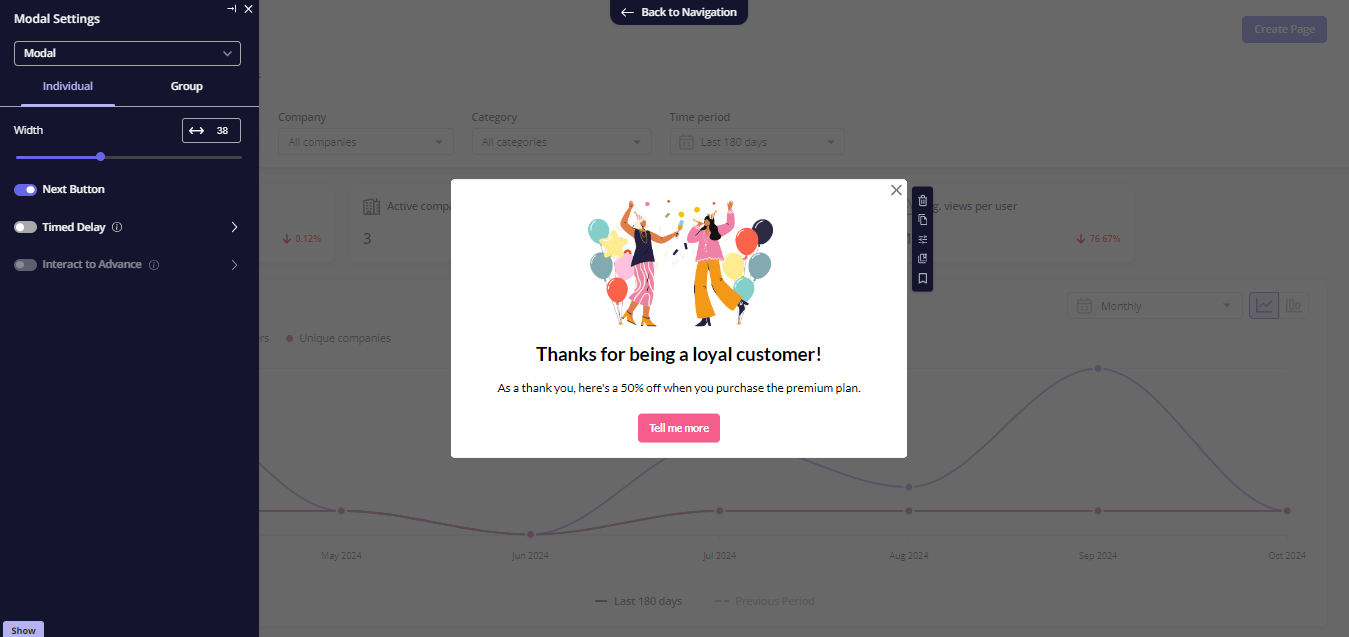
Customer retention KPI #6: Expansion MRR
Expansion MRR is the additional revenue your product generates from existing customers through cross-sells, upsells, or add-ons.
Growing this KPI is important because it is more cost-effective to increase the customer lifetime value of existing users rather than acquiring new ones, which enhances your LTV: CAC ratio.
To calculate this, you need to first find out the expansion MRR at the beginning and the end of the month and calculate their difference. This value is then divided by the revenue from the previous period, multiplied by 100.
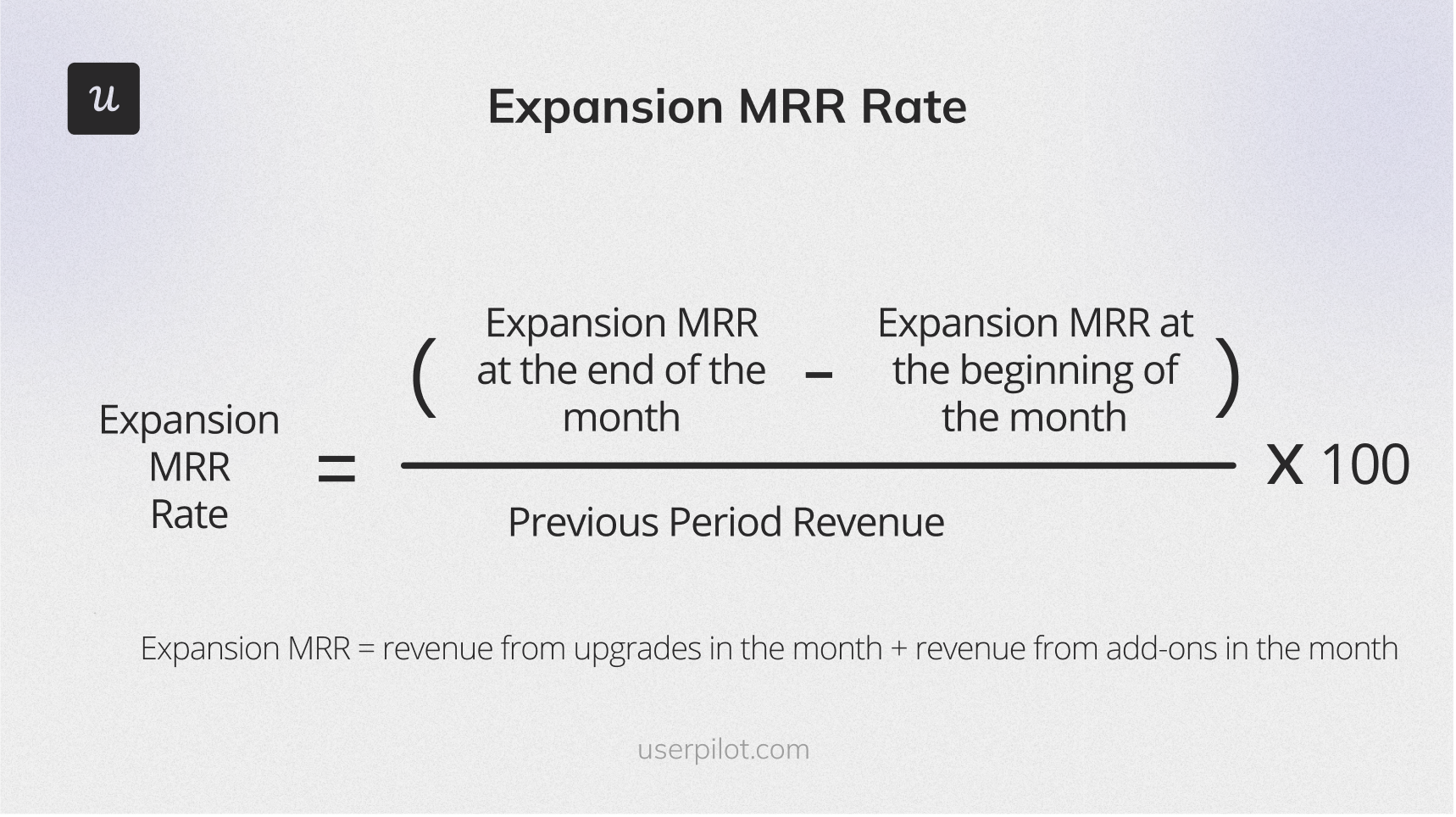
For example, if your expansion MRR is $14,000 at the beginning of the month and $19,500 at the end of the month, then your expansion MRR rate would be:
(19,500 – 14,000)/14,000 x 100 = 39.29%
How to improve expansion MRR
The best way to improve expansion MRR is to prompt customers to upgrade their accounts using tooltips, modals, banners, or emails.
Here’s how Miro communicates with their users and invites them for an upgrade.
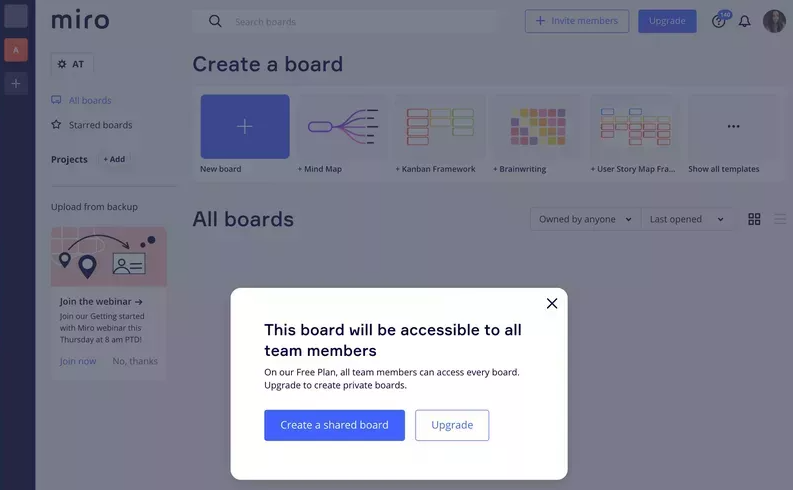
Userpilot allows you to create upselling modals like these and trigger them at the right moment.
Customer retention KPI #7: Customer satisfaction score
The customer satisfaction score (CSAT) is one of the most effective customer satisfaction metrics to measure. With it, you can gain insight into how satisfied your customers are with numerous aspects of your product, ranging from its features to the helpfulness of customer support.
To calculate this, create a CSAT survey asking customers about their satisfaction levels. You can ask a customer, “How satisfied were you with this session?” after a session with a customer service representative.
After that, divide the number of ‘happy’ customers by the total number of survey respondents to calculate the CSAT score. A higher customer satisfaction score can indicate that customers are happy with your product and will continue using it.
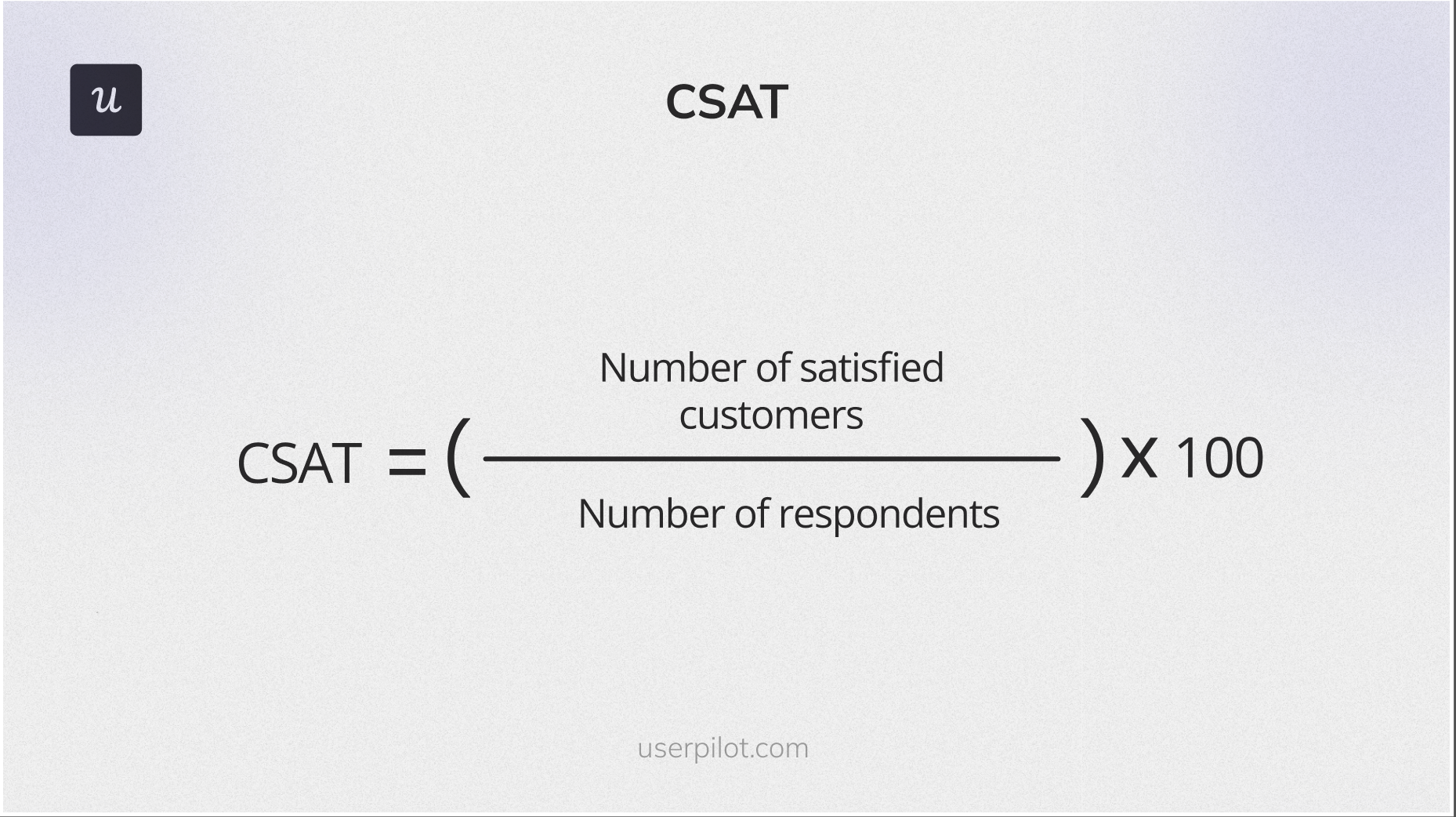
How to improve customer satisfaction scores
You can improve customer experience by collecting direct responses from users about what aspects of your product need improvement.
You can also measure customer satisfaction with a certain part of your product: features, resource center, educational resource, etc.
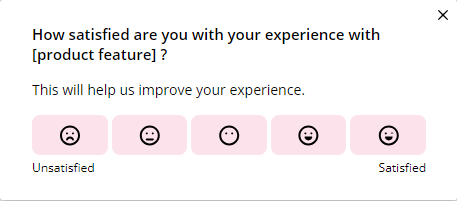
Customer retention KPI #8: Net Promoter Score (NPS)
The Net Promoter Score (NPS) measures the likelihood of your customers promoting your product. It is also a measure of customer loyalty.
To calculate the Net Promoter Score, you need to use a survey. Here, you ask your customers a question on a scale of 1 to 10: How likely are you to recommend us to a friend or family?
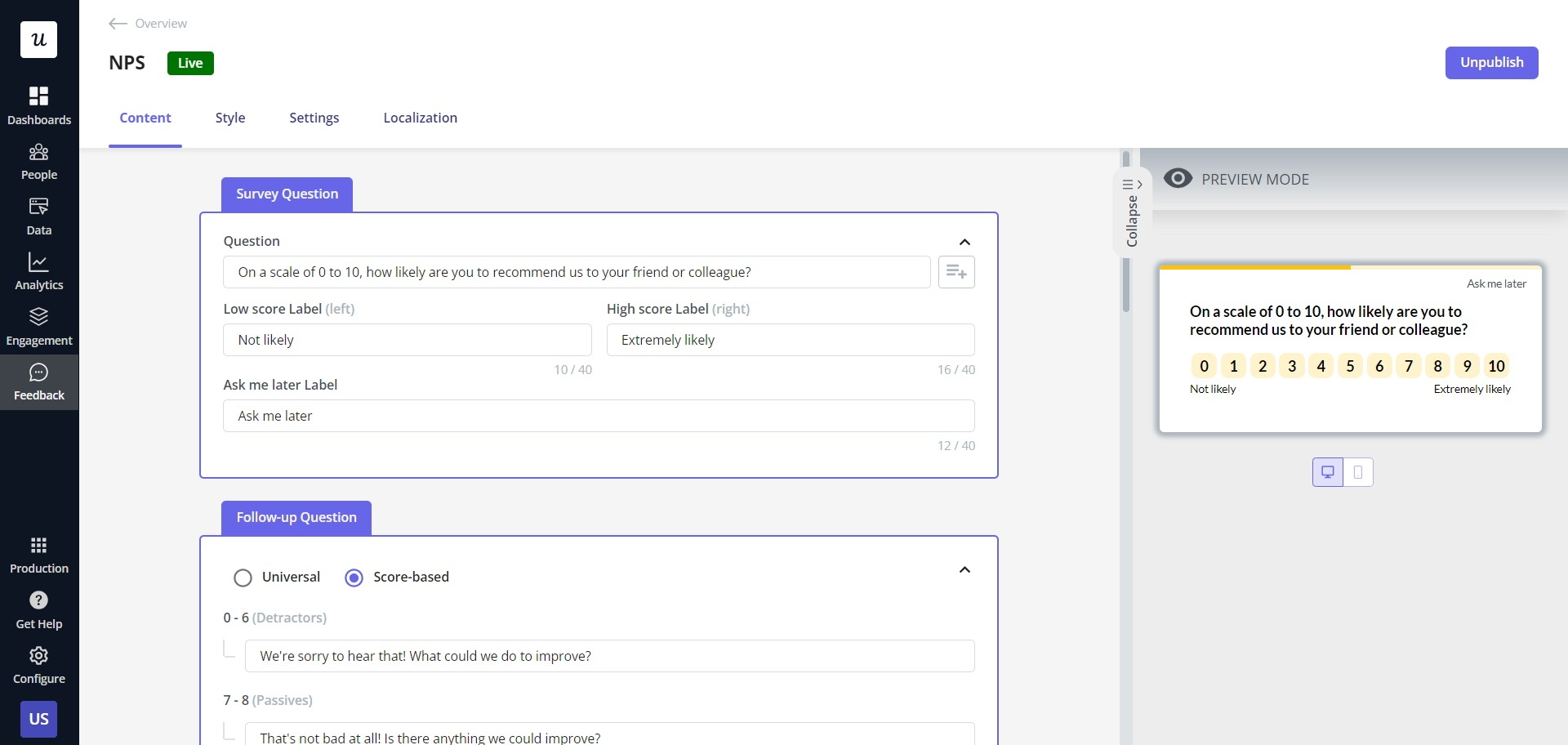
Your NPS is the difference between the percentage of promoters and detractors.
For example, in your survey, 60% of the respondents chose 9 or 10, while 30% chose 6 or below. So, your NPS score is 30%.
A high NPS score can encourage customer advocacy. It shows that your customers are extremely satisfied with your product, and are willing to actively promote it.
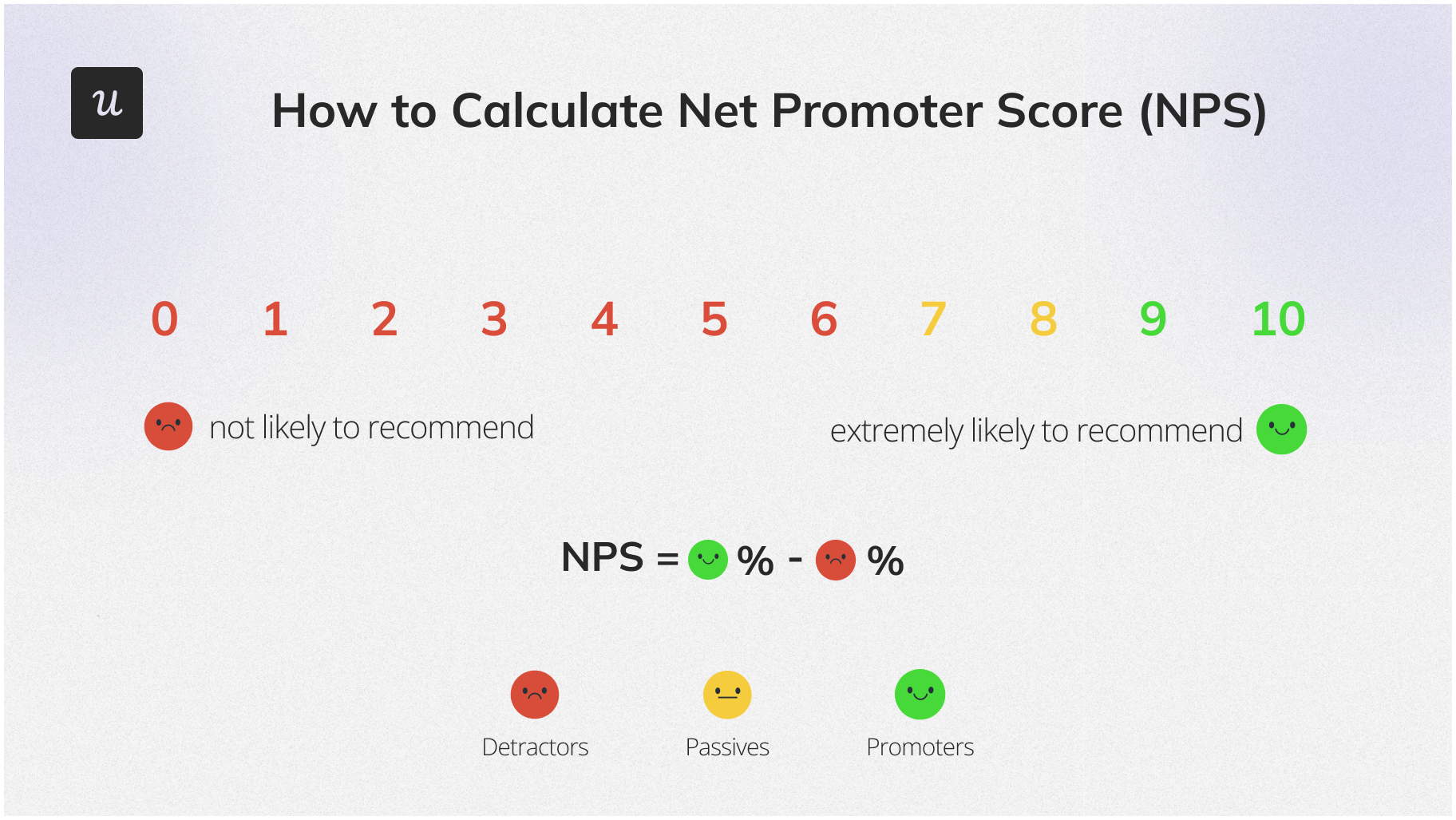
How to improve net promoter score
To improve your Net Promoter Score, you can add a qualitative question to the survey to understand users’ logic behind the score. This can help you identify exactly why your customers might or might not promote your product.
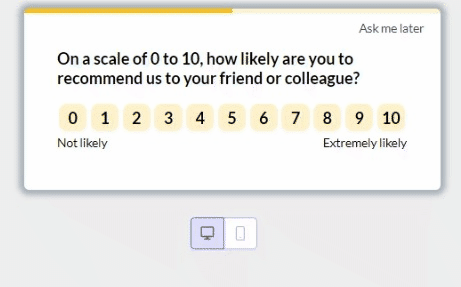
Once you have these answers, you can even follow up with the respondents by contacting them via email or inviting them for a call to learn more about their issue.
Customer retention KPI #9: Customer health score
The customer health score is a metric used to determine whether a customer is likely to grow, remain loyal, or leave. Keeping track of this allows you to identify potential churning customers, power users, account expansion opportunities, and customer success and failure patterns.
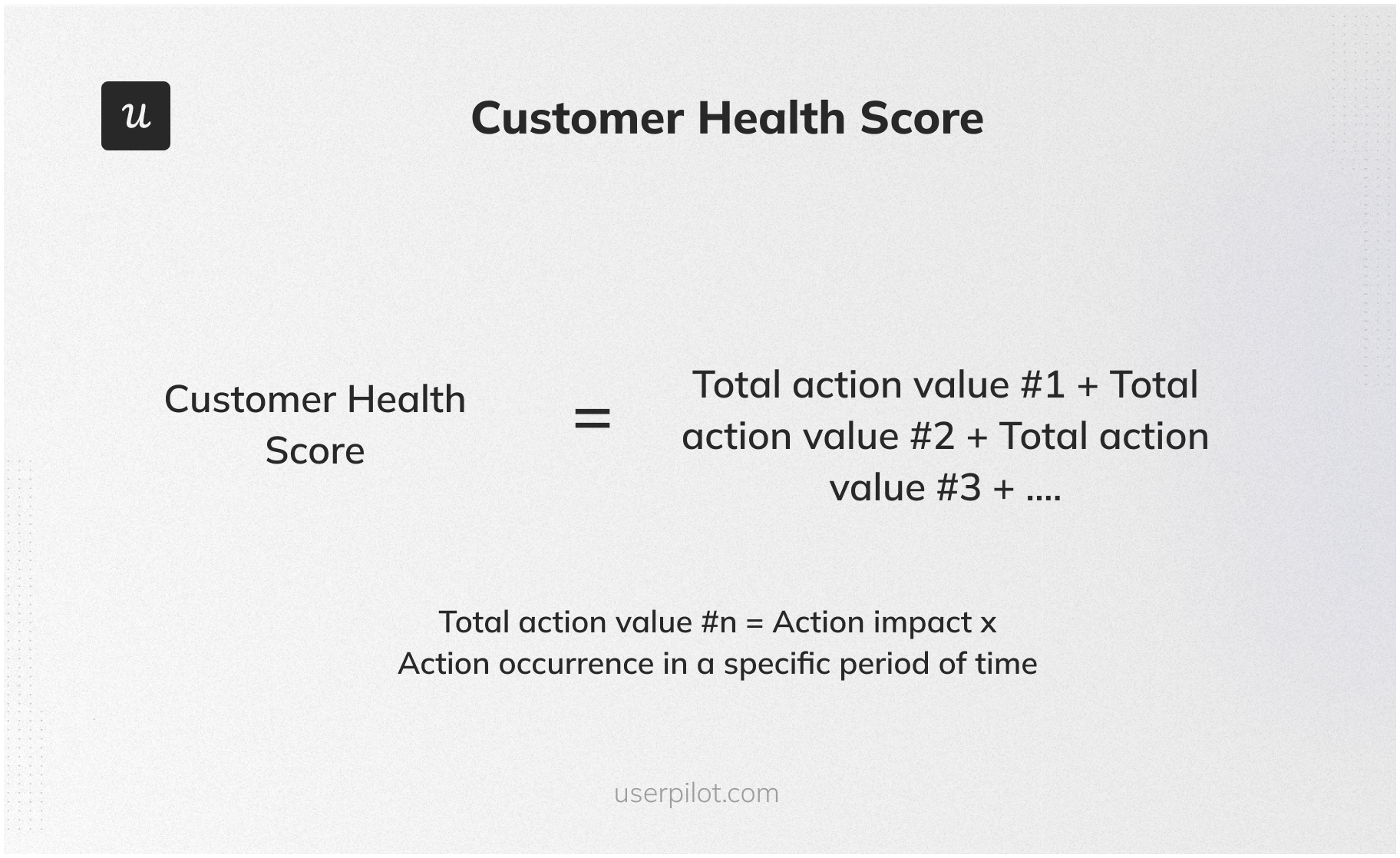
To calculate the customer health score, you have to determine the customer actions impacting the health score and assign an impact score to each action. These are known as action values.
For example, you can measure how many features your customers are using, the number of resolved or unresolved tickets in a day, or the frequency at which customers use your in-app help center and assign numeric scores to these elements.
Finally, you sum up the individual action values to get the customer health score.
How to improve customer health score
You can improve your customer health score by offering in-app guidance and in-app help centers so that customers can get on-demand support and overcome friction points on their own.
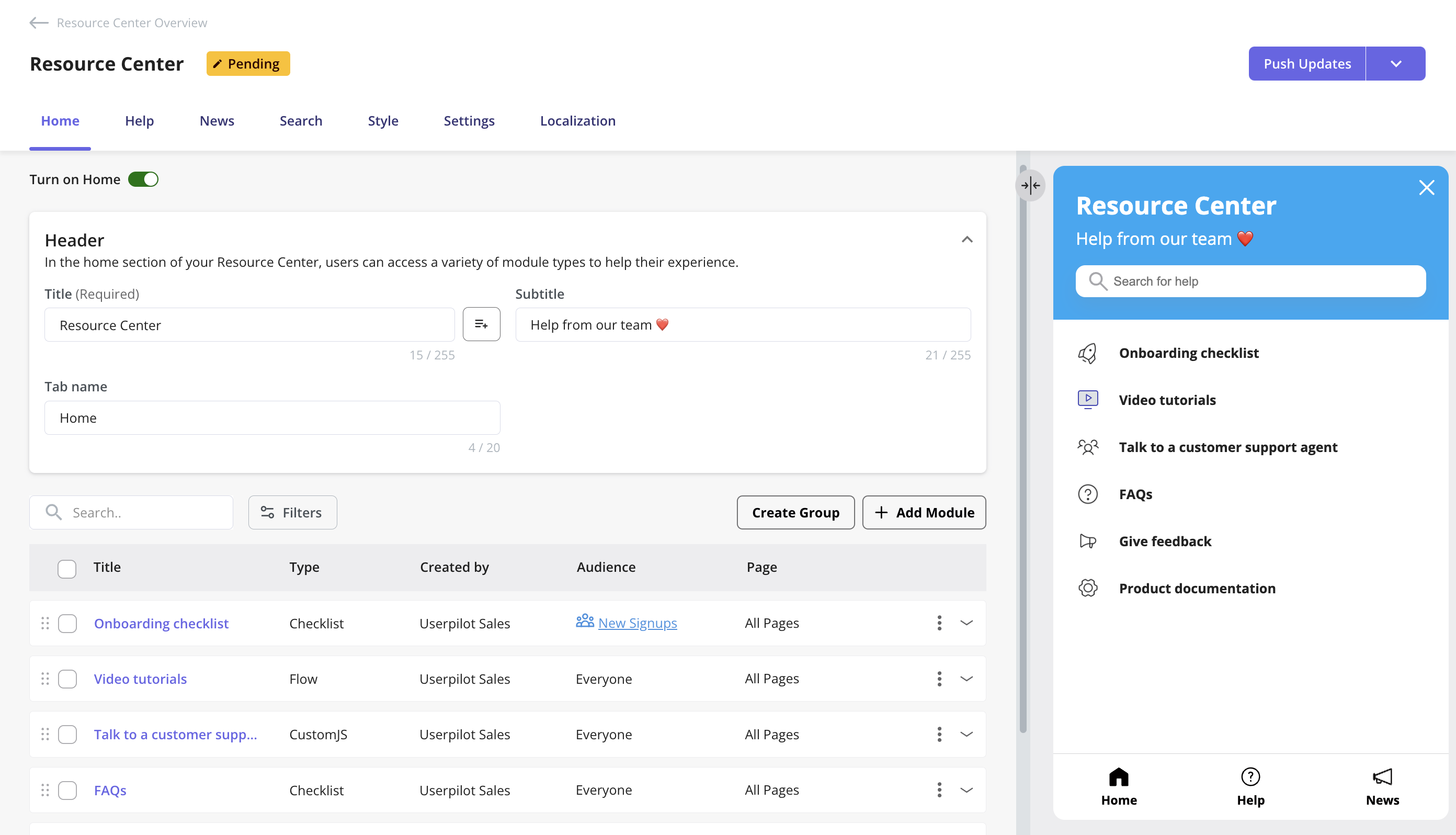
Support features like FAQs, knowledge bases, live chat, and others enable users to get support when they need it rather than waiting for a customer service representative.
Customer retention KPI #10: Revenue churn rate
The monthly recurring revenue your product loses from existing customers over a given time frame is known as revenue churn.
Your product is no longer valuable to your customers, so they switch to free plans or stop using it.
To calculate the revenue churn rate, divide the net revenue you lost from existing customers in a given period by the total revenue at the start of that period. Then, multiply the result by 100 to get a percentage.
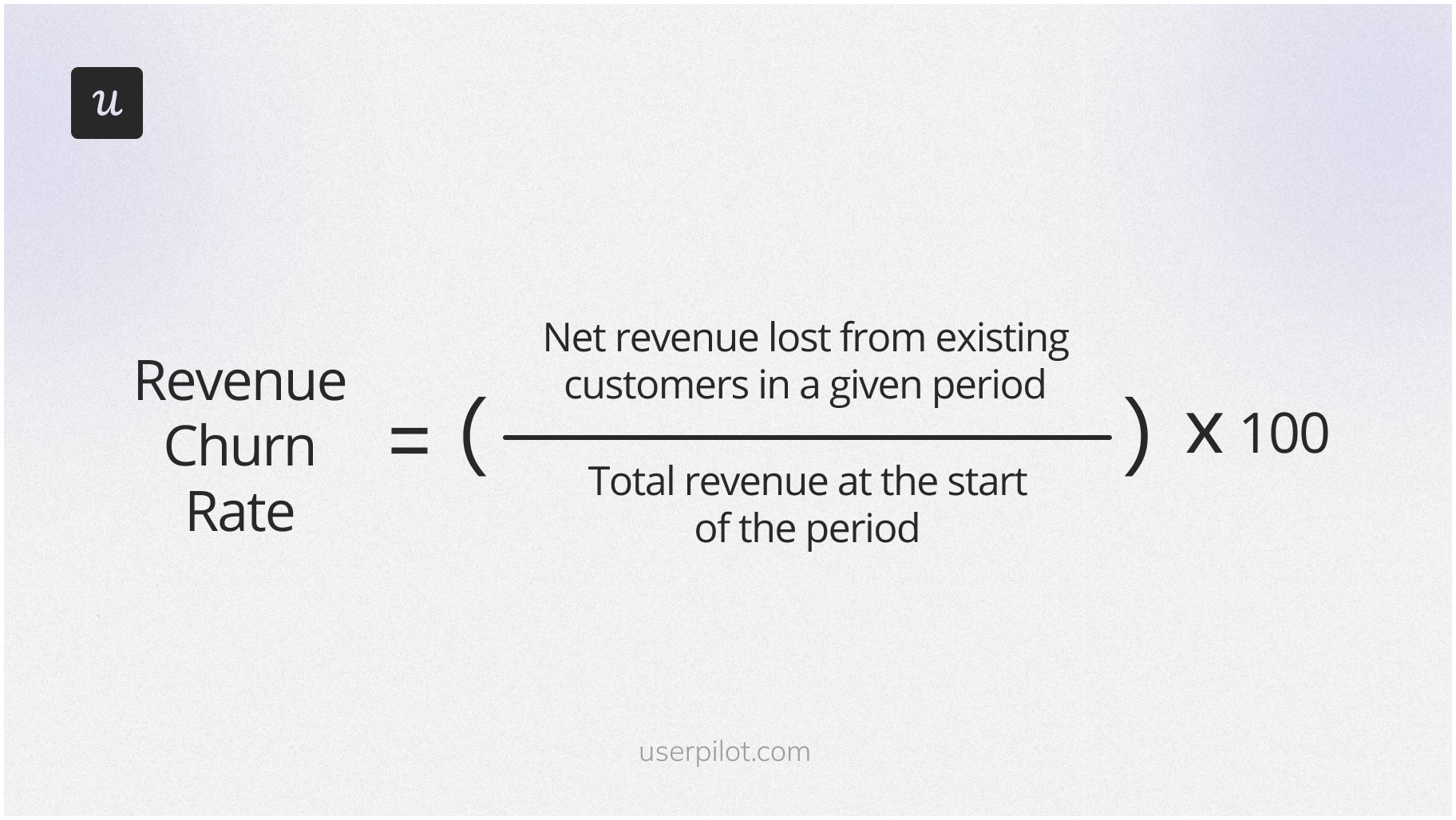
For example, your MRR at the beginning of January is $20,000. By the end of the month, you lost $3,000 in revenue due to churned or downgraded customers. For January, your revenue churn is:
(3,000/20,000) × 100 = 15%
How to reduce revenue churn rate
To reduce your product’s revenue churn rate, you need to first understand the reasons behind it. Here’s where churn surveys come into play.
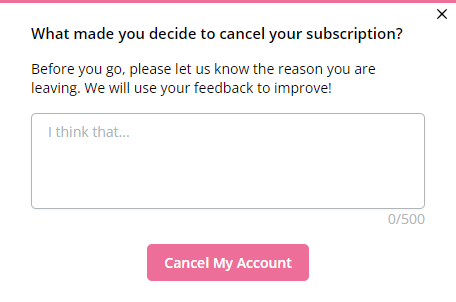
With churn surveys, you can ask customers what made them cancel their subscriptions. This will help you identify the friction points so you can fix them before the churn rate increases.
How can Userpilot help you improve customer retention metrics?
As a customer retention tool, here is what Userpilot can help you with:
- Onboarding: Engage users from the get-go with welcome screens, checklists, tooltips, interactive walkthroughs, banners, etc. Also, it can segment customers so you can personalize their experience.
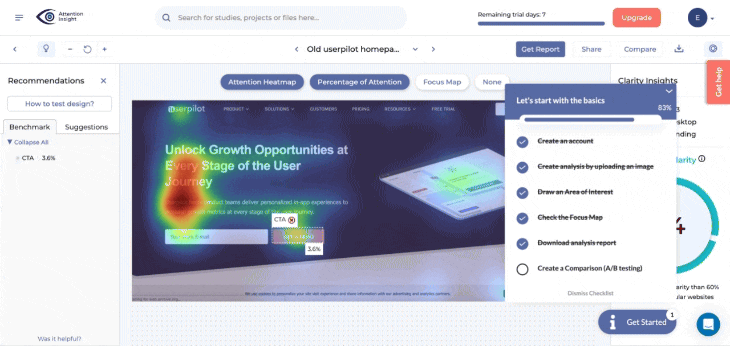
- Support: Build a customized and localized in-app resource center so customers can resolve issues independently at their own convenience.

- Analytics: Track customer retention in custom dashboards, visualize it with retention reports so you can identify friction points and prevent churn.
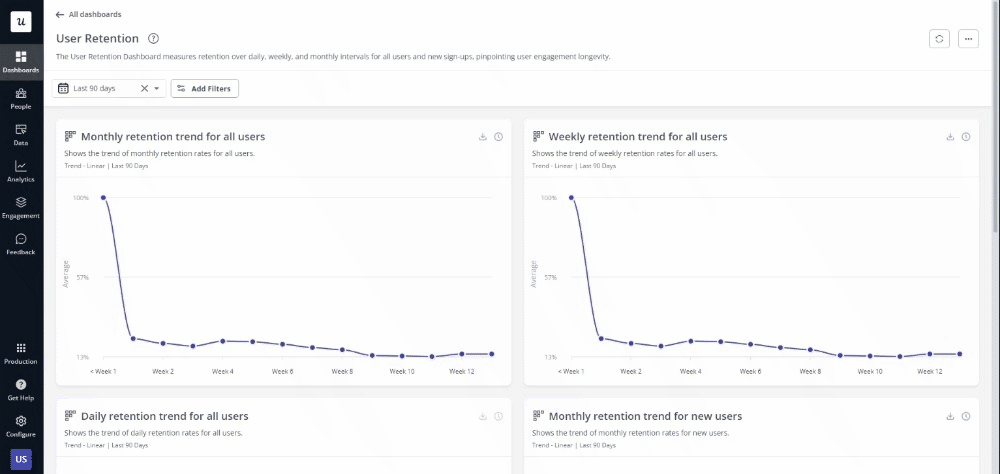
- Customer feedback: Choose from a variety of survey templates or build your own, trigger them for specific segments, and analyze the results.
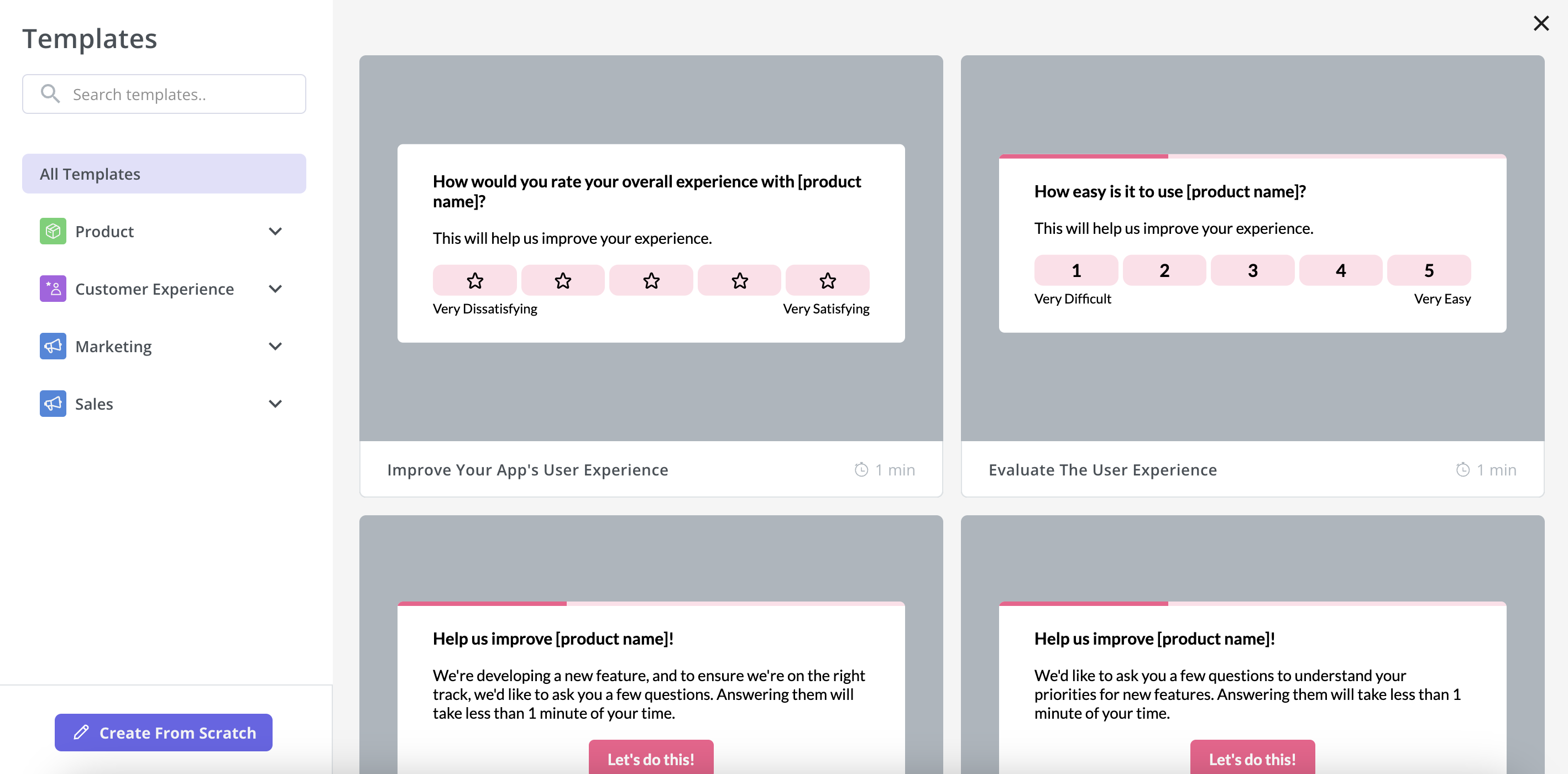
Getting started is easy, and there is no need to know how to code. It can be set up in minutes and is extremely fast.
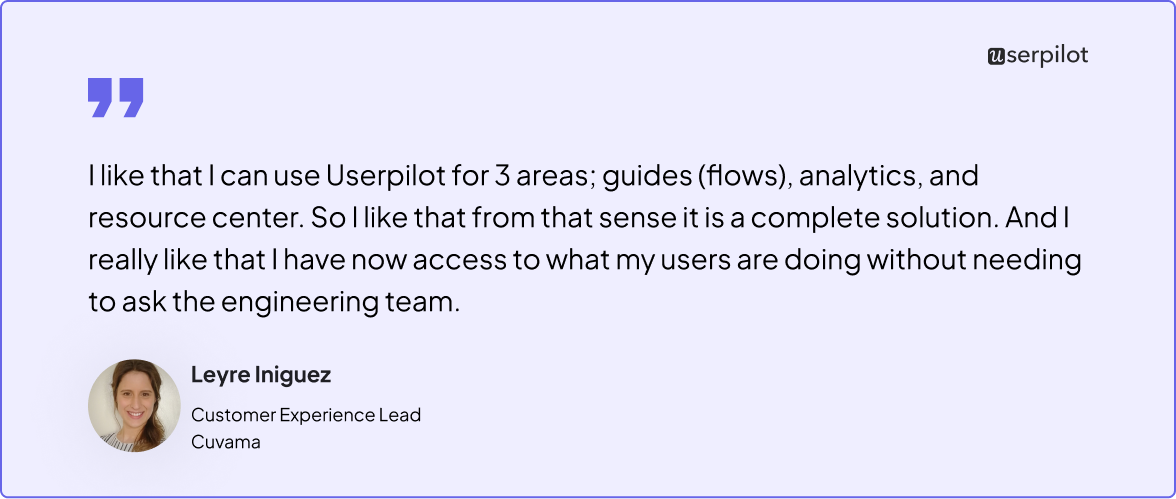
Customer retention KPIs: FAQs
What is customer retention?
Customer retention refers to a product’s ability to turn new clients into repeat customers. It occurs when customers find your product valuable enough to stick with it for a long period. You can measure customer retention using the retention KPIs mentioned in this article.
What are customer retention key performance indicators in SaaS?
Customer retention metrics or KPIs are numeric measures that allow you to measure how effectively a business retains its customers over time.
Customer retention rates, customer lifetime value, customer churn rates, and net promoter scores are some examples of customer retention metrics and KPIs.
Why is tracking customer retention KPIs important?
The majority of revenue in a subscription-based business model is derived from repeat customers, not from new ones. When you track customer retention metrics, you take proactive measures to understand customers, reduce churn, and improve customer loyalty.
Conclusion
How many loyal customers your product has determines its health and profitability, so identifying customer journey problems and focusing on customer retention is crucial.
Want to improve your customer retention KPIs with better product experiences? Get a Userpilot demo and see how you can reduce the number of churned customers.



